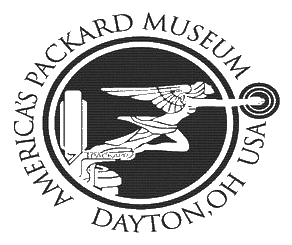 Image 1 of 1
Image 1 of 1


Packard Twelve Soft Enamel 5/8" Lapel Pin
The Packard Twelve
The car was a range of V12-engined luxury automobiles built by Packard from model year 1916 until 1923, then it returned 1933 until 1939. The majority of second generation cars received standard bodywork, with custom bodywork gradually losing favor. Many of the custom cars were actually only "semi-customs", with Dietrich assembling Packard-made bodies with special touches. For 1933, Packard reintroduced a twelve-cylinder engine, initially called the "Twin Six", then changing the name to "Packard Twelve," to align it with the rest of the Packard lineup. This was the 10th Series and two models were on offer: the 1005 and the 1006 had wheelbases of 142 in (3,606.80 mm) and 147 in (3,733.80 mm). The Twin Six' double drop frame was replaced by a tapered design. In October 1935, American President Franklin D. Roosevelt gave Soviwet Premier Joseph Stalin an armoured Packard Twelve, which became the dictator's favourite automotive vehicle for many years. Large displacement engines provided the horsepower and torque their clients wanted and due to the low quality of gasoline fuel at the time, and low comprehension, 50 bhp was more than adequate. It is estimated that the rating equivalent of early gasoline available varied from 40 to 60 octane and that the "High-Test," sometimes referred to as "fighting grade," probably averaged 50 to 65 octane.
The Packard Twelve
The car was a range of V12-engined luxury automobiles built by Packard from model year 1916 until 1923, then it returned 1933 until 1939. The majority of second generation cars received standard bodywork, with custom bodywork gradually losing favor. Many of the custom cars were actually only "semi-customs", with Dietrich assembling Packard-made bodies with special touches. For 1933, Packard reintroduced a twelve-cylinder engine, initially called the "Twin Six", then changing the name to "Packard Twelve," to align it with the rest of the Packard lineup. This was the 10th Series and two models were on offer: the 1005 and the 1006 had wheelbases of 142 in (3,606.80 mm) and 147 in (3,733.80 mm). The Twin Six' double drop frame was replaced by a tapered design. In October 1935, American President Franklin D. Roosevelt gave Soviwet Premier Joseph Stalin an armoured Packard Twelve, which became the dictator's favourite automotive vehicle for many years. Large displacement engines provided the horsepower and torque their clients wanted and due to the low quality of gasoline fuel at the time, and low comprehension, 50 bhp was more than adequate. It is estimated that the rating equivalent of early gasoline available varied from 40 to 60 octane and that the "High-Test," sometimes referred to as "fighting grade," probably averaged 50 to 65 octane.
